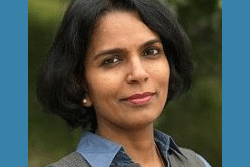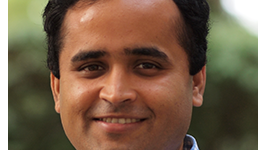What are the challenges that Europe must now face in order to improve – or even maintain – its positioning in high performance computing at the international level?
The European high performance computing effort is a process that begins with ambitions, talent, and rather exceptional skills in the areas of use and software. Setting up such a process is time-consuming, and now the challenge is to make it thrive and develop. HPC is a global race in which historic players such as the United States and Japan are well placed, but also in which new emerging countries such as China, Russia and India are poised to catch up, or who have already caught up, with the leaders.
With respect to PRACE, thanks to the JUQUEEN machine, Europe has now reached 7th place in the Top 500 ranking. In terms of performance, 80% of the European public infrastructures are in PRACE. Europe is following the same trajectory in the increase in computing power, but at a level substantially below that of the United States. Europe must act as a “continent” and not follow a national approach, and it needs additional financing to reach that higher level.
In the race for the Exascale, Europe may appear “fragmented” compared to the United States or China, where computing centers are already focusing on achieving this objective by the end of the decade. Through its Horizon 2020 Program, does Europe aim to take the lead, or should it resign itself to follow its competitors?
To the question “Is Europe a follower?” I will answer “no,” if only because the largest allocation in the world was made not in the United States or in China but in Europe. We are among the front-runners with many global advances achieved on European machines, such as the DEUS astrophysics project to model the structuring of the universe, carried out on the CURIE machine. From this perspective, Europe is not a follower.
Computing power is not really what’s at stake here. What is at stake is the use that is made of it. Creating exaflop machines is a very interesting project, but how many teams will be able to use them? The challenge is really to develop uses, to train more people, and to give young people the urge to pursue technologies that people dream about.
PRACE must be seen as the actual demonstration of the will of Europe’s leadership, or at least of its intent to place in this race to the Exascale, most likely with all the relative slowness inherent in our political and administrative organization, and with the fragmentation of our computing centers. Suffice it to say that the first discussions concerning PRACE, which was created in 2010, date back to 2004-2005. However, European high performance computing is up and running, and we are proud of this venture which has already led to some quite exceptional results. That is why the model begun and followed until now in PRACE must be perpetuated in PRACE 3, including a more integrated structure.
Along the same lines, in your opinion, what are Europe’s strengths and weaknesses when it comes to HPC?
First of all – and I can’t emphasize this enough – Europe has had very good scientists, know-how, and skills in the field of computing for quite a few years now. These are considerable strengths. However, funding is not at the same level as that allocated in the United States and China. That said, funding is not the essential factor: we must also – and above all – build Europe to provide greater integration, efficiency, and responsiveness.
PRACE collaborates with XSEDE, its equivalent in some sense in the United States. Could you tell us more about this collaboration? How is it implemented? What are the objectives and expected results?
PRACE and XSEDE launched this initial collaboration focusing on development and tools testing in order to evaluate and enable interoperability between our two research infrastructures. A first call for projects was launched in late 2013, in response to which we received some very attractive proposals that we are currently evaluating.
Does PRACE intend to set up the same types of collaboration with China or other countries that are major international players?
It is of course necessary to talk with our Chinese and Japanese counterparts. For the time being, these talks are still quite informal. For example, we and the Japanese are currently discussing ways in which we could work together and the scope of our collaboration. But remember that PRACE is still a relatively young organization that has yet to determine its processes and guidelines in this area. Being represented by twenty-five countries, four of which have greater voting rights, PRACE must obtain a consensus among its partners on the proper policy to pursue with China. Collaboration projects are underway, but we are moving forward carefully. In particular, we must ensure that we are all at the same level.
Isn’t this relatively excessive caution with respect to the Orient regrettable?
China has a very clear line of action with a specific direction. They develop machines with their own processor technologies for applications they consider strategic. They have ambitions and the means to achieve them, both financial and intellectual. This excessive caution you are talking about is a political problem. What is the European policy towards China in HPC – and in other sectors? If HPC is considered as strategic in many industrial fields, it does necessarily call for a bit of caution…
In conclusion, two years after the installation of the CURIE machine, what will be the next “mega-system” placed at the disposal of the scientific community? What will its features be, and when will it be available?
At the national level, GENCI is renewing the computational capabilities of the CINES with a public tender that is underway. At the European level, the power of the SuperMUC machine will be doubled in early 2015 from 3.2 to 6.4 Pflops. The second German machine, Hermit, a CRAY XE6, will evolve into a CRAY XC30 4 Pflops system in late 2014 or early 2015. Regarding Spain’s MareNostrum, its configuration will also evolve in 2015. As for Curie 2, whose launch we are targeting for 2017, it is a little early for all of the technical details to be finalized.
But you know, given the international context where supercomputers become obsolete so quickly, we have to do everything we can to promote high performance computing as a major component of Europe’s scientific, economic and social strategy. This is the philosophy of our commitment, both at the national and continental levels.
© HPC Today 2024 - All rights reserved.
Thank you for reading HPC Today.

































